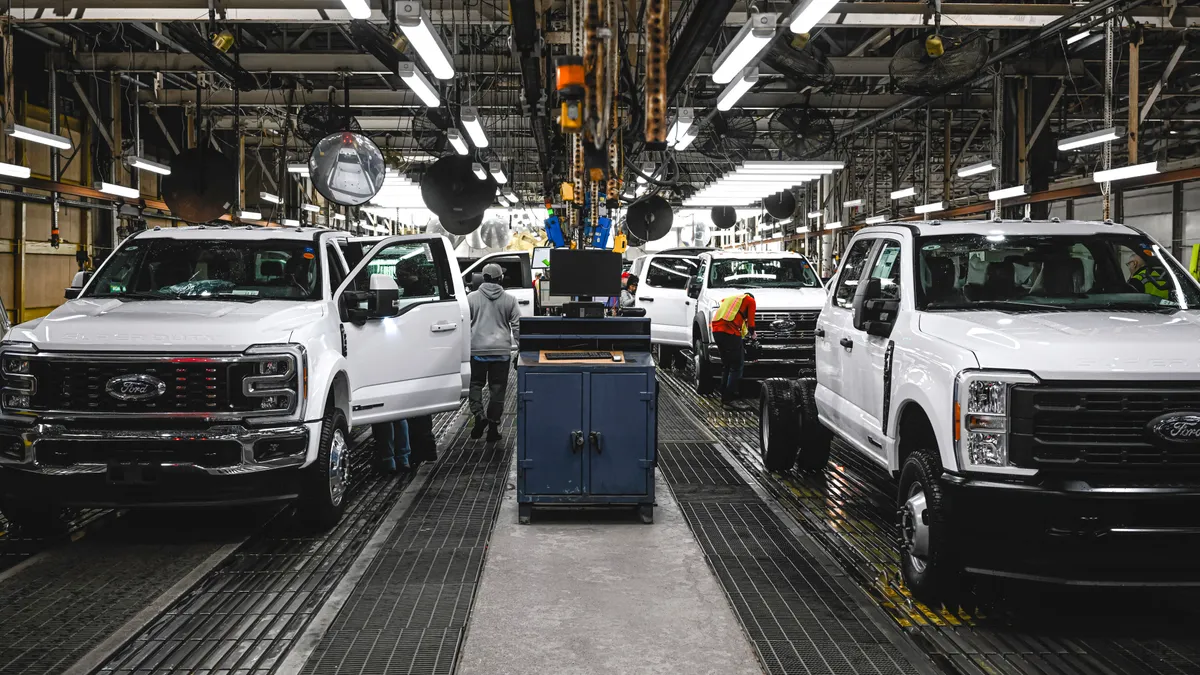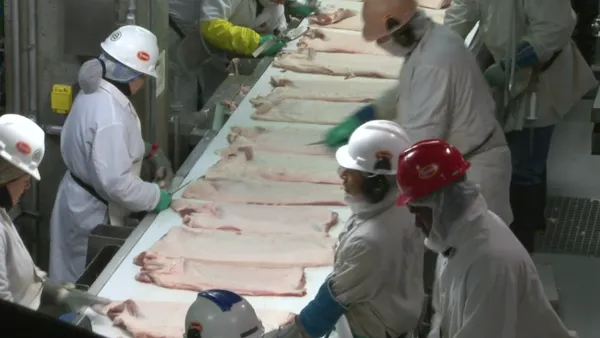Dive Brief:
- The new U.S. labor agreement between the United Auto Workers union and Ford will cost the automaker an additional $8.8 billion through 2028, the company said in a press release.
- Ford’s higher labor costs are largely due to gross wages, accelerated wage progression and cost of living adjustments, the company said.
- The automaker also said it will work to offset anticipated costs of approximately $900 per vehicle by 2028 by reducing expenses and increasing productivity.
Dive Insight:
With the UAW strike over, Ford updated its financial guidance after withdrawing it in October while the strike was underway. The automaker now expects full-year adjusted earnings before income and taxes of $10 billion to $10.5 billion, with an adjusted free cash flow of between $5 billion and $5.5 billion.
Ford’s adjusted EBIT estimate includes $1.7 billion in lost profits due to the strike, $1.6 billion of which will be from the fourth quarter, according to its press release. The company also said that disruptions in vehicle production as a result of the UAW strikes at the automaker’s highly profitable truck and SUV plants would lower vehicle wholesales by around 100,000 units.
Ford's increasing labor costs due to the new UAW contract is similar to General Motors. On Wednesday, GM announced a $10 billion accelerated share repurchase program. The automaker said the stock buyback would help it offset the costs of its labor agreement with the UAW, which the automaker pinned at $9.3 billion, slightly more than Ford.
The new UAW new contracts with the Big Three include a 25% increase in base wages over four-and-a-half years, cost-of-living adjustments and the ability to strike against plant closures.














